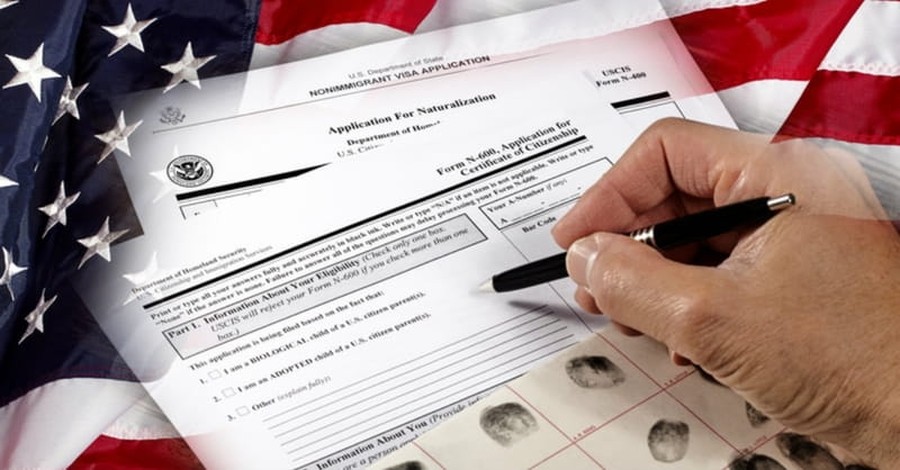How the Refugee and Asylum Process Works in the US: 9 Things to Know

Photo courtesy: Getty Images

What is a refugee?
The U.S. government defines “refugee” as any person who is outside any country of such person’s nationality or, in the case of a person having no nationality, is outside any country in which such person last habitually resided, and who is unable or unwilling to return to, and is unable or unwilling to avail himself or herself of the protection of, that country because of persecution or a well-founded fear of persecution on account of race, religion, nationality, membership in a particular social group, or political opinion.
Photo courtesy: Wikimedia Commons

What is asylum?
Asylum is government-sanctioned protection granted to foreign nationals already in the United States or at the border who meet the legal definition of a “refugee.” As a signatory to the United Nations 1951 Conventionand 1967 Protocol, and through U.S. immigration law, the U.S. has legal obligations to provide protection to those who qualify as refugees.
Photo courtesy: Unsplash/Cole Patrick

How do refugees apply for asylum in the U.S.?
The Refugee Act of 1980 allows for two paths to obtain refugee status—either from abroad as a resettled refugee or in the U.S. as an asylum seeker.
If done abroad, a refugee must receive a referral to the U.S. Refugee Admissions Program (USRAP) for consideration as a refugee. If they receive a referral, they refugee will receive help filling out their application and then be interviewed abroad by a United States Citizenship and Immigration Services (USCIS) officer who will determine whether they are eligible for refugee resettlement.
Asylum seekers who are already in the country (such as on a travel visa) or who have arrived at a U.S. port of entry must file the application with an immigration judge at the Executive Office for Immigration Review (EOIR) in the Department of Justice. Almost all refugee applicants who fail to apply for asylum within one year of entering the U.S. are barred from receiving asylum.
Photo courtesy: ©Thinkstock/MangoStar_Studio

What happens if a refugee shows up at a port of entry or crosses the border unlawfully?
Whether they are caught at the border crossing illegally or present themselves to immigration officials at a port of entry, refugee candidates are subject to “expedited removal,” a policy that allows the Department of Homeland Security (DHS) to deport an undocumented person without giving them a chance to defend against deportation in immigration court.
To prevent immediate deportation, asylum seekers who are placed in an expedited removal process must tell a Customs and Border Protection (CBP) official they fear persecution, torture, or returning to their country, or that they wish to apply for asylum. If an U.S. asylum officer determines asylum seeker has a “credible fear” of persecution or torture, they can proceed with the asylum application process.
If a person has re-entered the U.S. unlawfully after a prior deportation order or is a noncitizen convicted of certain crimes, they are subject to a different expedited removal process called “reinstatement of removal.” Asylum seekers in this process must meet the “reasonable fear” standard in an interview with an asylum officer. To demonstrate a reasonable fear, the asylum seeker must meet the definition of refugee and show there is a “reasonable possibility” they will be persecuted or tortured in the country of removal.
All asylum seekers have the burden of proving that they meet the definition of a refugee.
Photo courtesy: Religion News Service

How many people are currently seeking asylum and how many are approved?
In 2016, the last year for which complete data is available, 20,455 people were granted asylum. In fiscal year 2018, there are 714,067 pending asylum cases in the U.S. (If the 2016 rate holds in 2018, then only about 3 percent of current asylum seekers will be granted asylum.)
Photo courtesy: Religion News Service

How long must a refugee wait before asylum is granted?
In fiscal year 2018, the average asylum seeker will wait 721 days for their case to be resolved. The waiting time to be granted asylum depends on a number of factors, including the person's nationality, the state handling the case, and the court location. You can find more details here.
Photo courtesy: ©Thinkstockphotos.com

Can refugees and asylum seekers work in the U.S. while they are waiting adjudication?
Yes. Both refugees and asylum seekers who are allowed to await adjudication in the U.S. are authorized and entitled to work. The U.S. Citizenship and Immigration Services outlines the details of this information in a document titled "I am a refugee or asylee: How do I show my employer that I am authorized to work in the United States?"
Photo courtesy: ©Thinkstock/littlehenrabi

Can a refugee or asylum seeker become a U.S. citizen?
Yes. A refugee or asylee may apply for permanent resident status in the U.S. one year after being admitted as a refugee or being granted asylum status. Refugees are required by law to apply for permanent resident status one year after being admitted to the United States in refugee status. Asylees are not required to apply for permanent resident status after being granted asylum for one year, but it may not be in their best interest to do so as it may affect their benefits they would receive if granted refugee status.
Photo courtesy: ©Thinkstock/JamesYetMingAu-Photography

Who is responsible for overseeing the resettlement of refugees in the U.S.?
The Office of Refugee Resettlement (ORR) is the federal government agency charged with providing benefits and services to assist the resettlement and local integration of refugee populations. Some of the ORR programs include Refugee Cash Assistance and Refugee Medical Assistance (for up to 8 months); Refugee Social Services, such as job and language training (for up to 5 years); and temporary custody and care to unaccompanied refugee children. But according to a recent paper by the National Bureau of Economic Research, by the time refugees who entered the U.S. as adults have been here for 20 years, they will have paid, on average, $21,000 more in taxes to all levels of government than they received in benefits over that time span.
Based on the Ethics & Religious Liberty Commission article "Expainer: How the refugee and asylum process works in the U.S." Used with permission.
Photo courtesy: Flickr.com
Publication date: June 25, 2018










